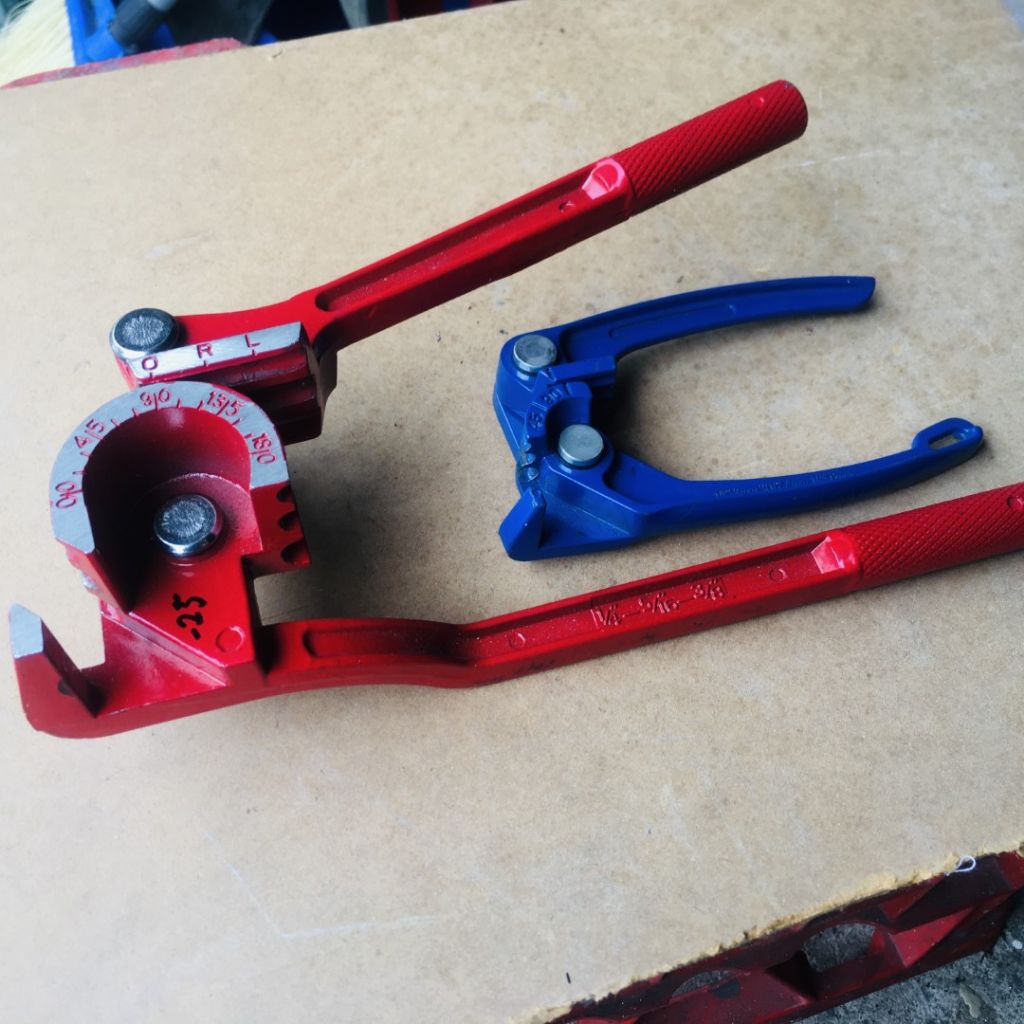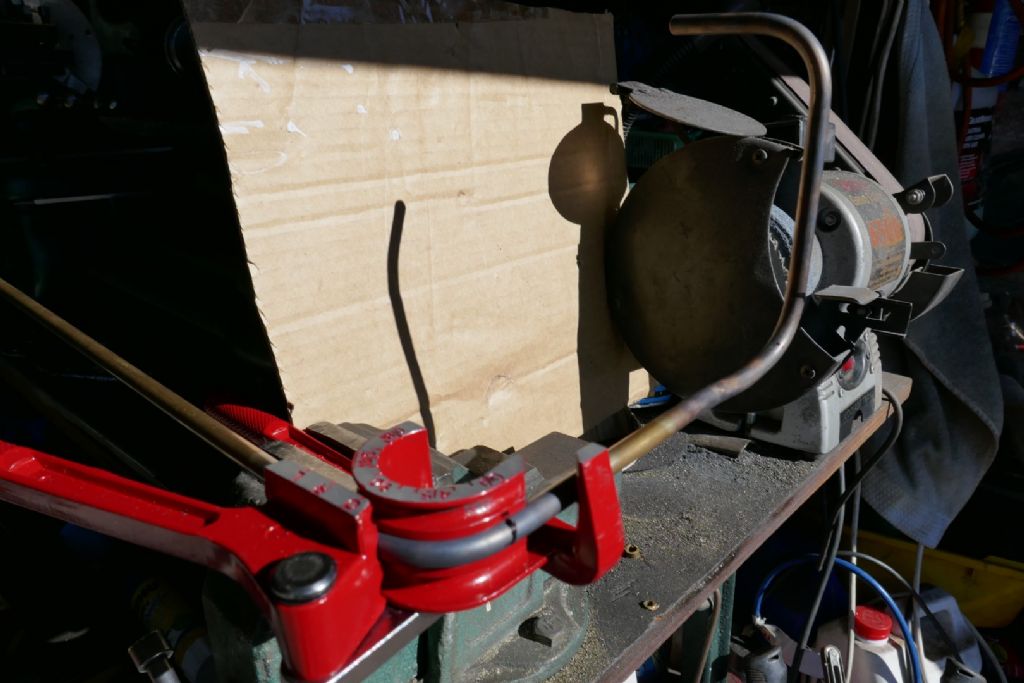You've just sent traipsing back down the garden to the workshop to fetch my tube-bender formers, to establish their bend radii to tube diameter rule.
Mine is made by Rothenberg, a reputable manufacturer of plumbing (and other trade?) tools.
This bender uses a near-semicircular former pushing the tube between a pair of grooved, fixed posts on a Y-shaped yoke; each die and yoke being specific to tube size.
Quoting the die "diameter" across the groove centre (i.e the diameter of the block itself), and by tube sizes, their approximate diameters and ratios are:
– 6mm tube 46mm dia die: 7.6:1
– 8mm . 5/16" : 55mm : 6.9:1 [The 5/16" dimension is embossed on the former as well as the mm size.]
– 10mm : 66mm : 6.6:1
– 12mm : 68mm : 5.7:1
However, I use the words "semicircular" and "diameter" advisably because the dies are not full semicircles; so their actual diameters would be somewhat larger than the chord lengths I have measured.
As a rough guide then, this set uses bend radius of about [3.5 to nearly 4] X tube diameter.
'''''''
The Rothenberg set originally had a pistol-grip ratchet driver to push the former across the yoke, but on my set this was totally unserviceable and I was unable to repair the previous attempted repair. So I replaced it with a simple screw-action driver, a little like a small drilling-vice action, but gave it the neat locking-pin arrangement that held the former to the original, and now to the end of the screw.
The ratchet driver was of course to expedite use by professional tube-fitters making copper spaghetti every day; but the slightly slower action of a screw-in driver hardly matters in very occasional hobby use.
Though I cross-drilled the handle for a tommy-bar, I have not found that necessary. I did not knurl the handle, but cut shallow flutes in it instead.
I have now augmented this by buying a pull-round bender like the blue one in Paul Lousick's photo (thank you Blackgates) for the 1/4" and below tubes, and a quick test on some off-cuts gave very pleasing results. I have not measured the ratio but it looks about 3:1 bend radius to tube diameter, which I have seen published as a safe minimum.
not done it yet.



 held i
held i

